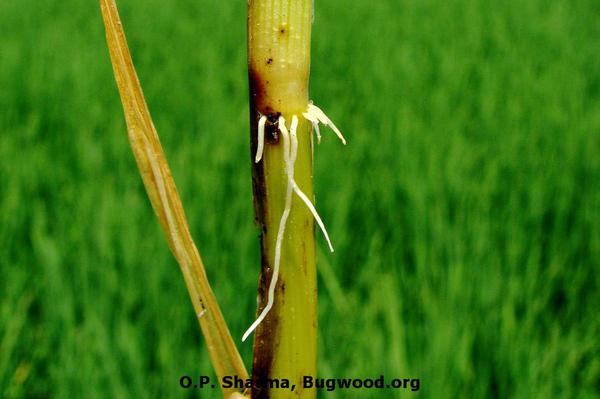
Foot Rot (Bakanae Disease of Rice)
History and Importance:
First appeared in Japan in 1898. In sub-continent first appeared in 1931. Crop losses caused by the disease may reach up to 20% in severe cases.
Etiology:
Causal organism: Gibberella fujikori
Symptoms:
- Diseased plants are several inches taller than healthy plants with thin and yellowish green appearance.
- Affected tillers die before reaching maturity.
- Diseased plants produce adventitious roots (roots that emerge from non root part of the plant) near lower nodes of the stem.
- Infected plants produce no grains.
- Pinkish growth of plants is visible in split nodes and at the base of plants.
Disease cycle:
- Primary spread: The pathogen overwinters both on the seed as well as in the soil. Thus the primary infection of the host is initiated either from the seed or soil or from both the sources.
- Secondary infection of the adjacent plants may take place by the growth of the fungus or through interculturing implements or by irrigation water.
Epidemiology:
The fungus grows best at 30 and 35ºC and high moisture content. Thus incidence of disease is more in wet than dry nurseries. Excessive use of nitrogenous fertilizers predisposes the plant to the attack of pathogen.
Management:
- Use clean seeds to minimize the occurrence of the disease.
- Use salt water to separate lightweight, infected seeds during soaking
- Use fungicides as seed treatments i.e. triflumizole, propiconazole, prochloraz or a combination of thiram + benomyl.


